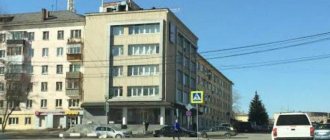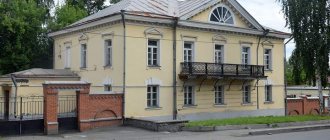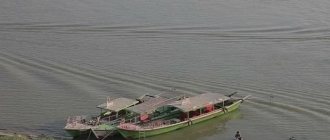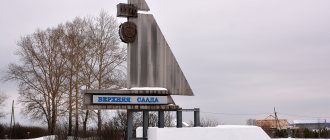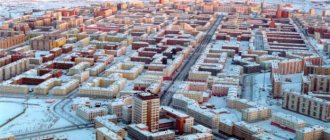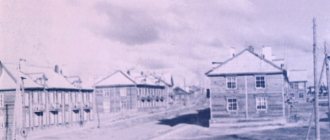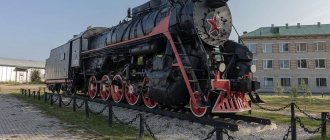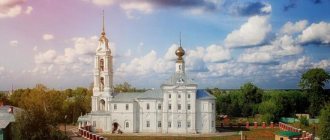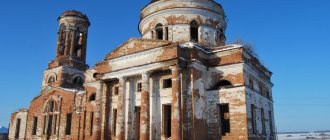History and features of the city
The first mention of Magnit Mountain (Mount Vysokaya) dates back to the second half of the 17th century, but systematic mining of ore began only in 1721. Akinfiy Nikitich Demidov (1678–1745) built two factories here: the Vyisky copper smelting plant (launched on October 23, 1722) and the Nizhny Tagil iron-smelting and iron-making plant (launched on December 25, 1725).
The launch of the Vyysky plant is considered the founding date of the city. In 1736, due to the low copper content in the ore, the enterprise became an iron-making enterprise. After the discovery of the Mednorudyanskoye deposit at the foot of the Vysokaya Mountain in 1814, the Vyysky plant again began smelting copper in the 1820s.
Interesting fact: copper smelted at the Vyysky plant was used in the manufacture of the famous Statue of Liberty, which was donated by France in 1889 for the 100th anniversary of the founding of the United States. The last copper smelting at the Vyisky plant took place in 1916.
On Vyya stood the Vyisko-Nikolaevskaya Church, consecrated in 1846. It served as the Demidov family tomb. In 1875, the ashes of P.N. were transported here. Demidov along with a large marble tombstone. In the altar there was a tabernacle made of a single piece of malachite weighing about 7 pounds. The church was closed in the 1930s and later demolished. Marble crucifix from the tombstone of P.N. Demidov was transferred to the local history museum.
The Nizhny Tagil iron smelting and ironworks plant stood 3 versts from Vyisky. It was built on the Tagil River near Mount Vysokaya. This mountain in the upper part consisted of pure iron ore. The enterprise was built as the most powerful iron smelter in the Urals. Launched in 1725, the blast furnace was the largest in Europe at that time. The Nizhny Tagil plant was the center of the Demidovs' mining empire. The finished products were transported to the Utkinskaya pier and sent in barges along the Chusovaya River to Central Russia.
Over centuries of development, a large quarry was formed on the site of Mount Vysokaya. A popular saying was born: “There was a high mountain, but the hole became deep.” In Soviet times, ore mining began underground - in mines. The Magnetite mine reached a depth of 610 m and is still in operation. The Vysokogorskoe iron ore deposit is the oldest and largest in the Urals.
In the 18th century, the Nizhny Tagil plant became one of the largest factories in Europe with advanced production technology. Tagil iron with the Demidov brand “Old Sable” was readily bought by England, Holland, France and Sweden.
In 1806, Nizhny Tagil became the center of the Nizhny Tagil Mining District.
In 1834–35, rich deposits of malachite were discovered at the Mednorudyanskoye deposit. Among other things, a unique monolith weighing almost 40 tons was mined. Malachite was used to decorate the internal columns of St. Isaac's Cathedral, the Malachite Hall of the Winter Palace in St. Petersburg, and huge vases, bowls, tabletops and other products were made.
In 1876, the Gornozavodskaya Railway passed through Nizhny Tagil. In 1897, a narrow-gauge railway was built connecting Nizhny Tagil with the Chernoistochinsky, Visimo-Shaitansky and Visimo-Utkinsky plants. The Nizhny Tagil plant was visited by many famous people, including the Tsarevich, the future Emperor Alexander II in 1837.
Nizhny Tagil is associated with the names of many talented people. In 1834, at the Vyysky plant, serf inventors Efim Alekseevich and Miron Efimovich Cherepanov built the first steam locomotive in Russia to transport ore from the Mednorudyanskoye deposit to the plant. Egor Grigorievich Kuznetsov-Zhepinsky was also distinguished by his talents, making “musical droshky” and an original astronomical clock. In addition, according to legend, it was the Nizhny Tagil artisan Efim Artamonov who designed the first Russian bicycle at the beginning of the 19th century.
Nizhny Tagil is the birthplace of the Russian painted iron tray. The Khudoyarov artists became especially famous in this matter.
At the beginning of the 20th century, in terms of population (more than 30 thousand people) and industrial production, Nizhny Tagil was second only to two cities in the Perm province - Yekaterinburg and Perm. However, it received city status only in 1919.
“The huge factory village of Nizhny Tagil, corresponding to the provincial city in terms of the number of inhabitants, makes a very special impression on a person who has not yet become accustomed to the type of what is called a “factory” in the Urals,” wrote D.I., who visited the Nizhny Tagil plant in 1899. Mendeleev.
In the 1930s, large-scale industrial construction began in Nizhny Tagil. The Uralvagonzavod, the Novotagil Metallurgical Plant (later NTMK), the Plastics Plant, and the Coke and Chemical Combine were built. NTMK has become one of the largest ferrous metallurgy plants in Russia - an enterprise with a closed metallurgical cycle, producing cast iron, steel, rolled products and refractories.
During the Great Patriotic War, Nizhny Tagil received a number of evacuated enterprises, and the smelting of armor steel was mastered. During the war, NTMZ produced about 30% of all armor steel in the USSR. In 1941–45, 35 thousand T-34 tanks were manufactured in Nizhny Tagil.
In Soviet times, the old Demidov plant was named after V.V. Kuibysheva. The last pig iron in his blast furnace shop was received on October 6, 1987, after which the enterprise closed. A museum-factory was created here.
The leading enterprises of the city at present are: Nizhny Tagil Metallurgical Plant (NTMK), Uralvagonzavod, Vysokogorsky Mining and Processing Plant, Uralkhimplast, Nizhny Tagil Metal Structures Plant. UVZ cars travel on railways throughout the country. Weapons are also produced in Tagil. Until 2015, a major arms exhibition, Russia Arms Expo, was held at the Staratel training ground of the Metal Testing Institute, until it was moved to the Moscow region.
As a consequence of developed industrial production, the environmental situation in Nizhny Tagil leaves much to be desired. This city has long been famous for its colored smoke. Now, after the closure of some industries and modernization, others have gotten better, but are still far from normal. You understand this especially clearly when you drive along Vagonka and experience a sore throat from the toxic smoke. Another disadvantage of Nizhny Tagil: there are many prisons and colonies, which negatively affects the crime situation. I don’t want to live in this city, but it’s definitely worth visiting.
The area of the city is 298.47 km². Nizhny Tagil has three districts: Dzerzhinsky, Leninsky, Tagilstroevsky. The population of Nizhny Tagil is 354 thousand people (2018) and continues to decline. For comparison, in 1989, about 440 thousand people lived here.
Sights of Nizhny Tagil
I’ll tell you about the most interesting places in Nizhny Tagil, which every tourist visiting the city should visit.
The calling card of the city and one of its main symbols is Fox Mountain . It is located near the Tagil pond. It's definitely worth climbing it. From there you have a beautiful view of the city, pond, and old factory. In the rocks at the northern foot of the mountain there is a small cubic grotto (about 2 m). In 2010, a monument to the metallurgists of Nizhny Tagil was erected near the foot of Fox Mountain.
watchtower rises on the mountain . It was built in 1818 (before that it was wooden). There is some debate regarding the purpose of the tower. In 2015, the tower was repaired and a small museum, “Tower on Fox Mountain” (tel.), was placed inside. It is considered the smallest in the world. The museum is open only during the warm season, in winter by appointment.
Near Fox Mountain there is a Museum-Factory of the History of the Development of Ferrous Metallurgy Technology (Lenin Ave., 1, tel. 96-95-13), created in January 1989 on the basis of an old metallurgical plant. This is the first and only museum-factory in Russia with a full production cycle of a metallurgical enterprise, and is an object of history and culture of federal significance.
The museum-factory includes 6 exhibitions: blast furnace and open-hearth shops, rolling production, energy management, metal machining equipment, foundry and furnace production, as well as 3 exhibitions - rolling stock, factory and mining equipment. Locks, canals and spillways from the 18th century, as well as workshops from the 19th century, have been preserved. And the blast furnaces themselves are from the Soviet era - 1920-30s.
The territory of the plant can only be accessed in the summer with a guided tour. If this was not possible, then you can look at the former enterprise from the outside, and also approach a small exhibition in an open area. However, some sneak into the territory illegally, which is not very good.
Walking along the dam of the Tagil Pond, you will find yourself in the historical center of Nizhny Tagil. On the shore of the pond rises the former building of the main administration of the Nizhny Tagil mining district . It was built in 1830 in the style of late classicism according to the design of the architect Alexander Komarov.
The eastern wing of the building houses the Nizhny Tagil Museum of History and Local Lore (Lenin Ave., 1, tel. (3435) 41-64-12, 41-64-01, 41-64-47). It was founded by the Demidovs in 1840 as a “museum of natural history and antiquities.” The creation of the museum was preceded by a factory exhibition organized in 1837 to coincide with the arrival of Tsarevich Alexander Nikolaevich, the future Emperor Alexander II, at the Tagil factories. At first, the museum was a closed institution; only in 1891 it was transformed into the Mining Museum and opened to the public. The museum displays many unique exhibits. The building itself retains its original cast-iron staircase and cast-iron slab floors. In front of the museum entrance there is a model of the first steam locomotive.
Across the road, on the other side of Lenin Avenue, in the Working Youth Park, there is one of the most famous monuments of the city - the monument to V.I. Lenin . It is considered the most original in the Urals. For the construction of the monument, a competition for the best project was announced in 1925. The winner was the art teacher of school No. 1, Alexey Frolov, whose project was called “Lenin is alive in the testaments.” The sculpture of the leader himself is typical, but the marble pedestal is very interesting. It was made by the Marble Handicraft Artel. The base of the pedestal consists of books stacked on top of each other. There are open books on them on four sides, the pages of which contain quotes from the works of V.I. Lenin. The pyramid of books is crowned with an image of our planet - the Earth, on which stands the leader of the world proletariat himself, calling “to a bright future.” The monument was inaugurated on November 7, 1925, on the day of the eighth anniversary of the October Revolution.
But there are other attractions near the museum. It is worth seeing the nearby exhibition of mining equipment : factory equipment of the 18th–19th centuries, mining equipment of the 20th century and finished products of NTMK OJSC.
of the Lower Provisions Warehouse (Uralskaya St., 2), built in the 1760-70s in the Peter the Great Baroque style, is also located here In 1980, the depository of the Gornozavodskoy Ural museum-reserve was located here.
Opposite is the building of the Upper Provisions Warehouse , built in 1809-24. It houses the Museum of Nature and Environmental Protection (Lenina Ave., 1a, tel. (3435) 41-80-47). The exhibition tells about iron and copper ore deposits, the development of gold and platinum placers, and semi-precious mines. A model of the Mednorudyanka mine, a block of malachite weighing 500 kg, and concentrates of gold and platinum are presented. A separate exhibition is dedicated to wildlife and environmental issues. The museum exhibits a unique paleontological collection, including skeletons of an entire family of mammoths. Near the museum building there is a monument to the T-34 tank.
A little further along Uralskaya Street is the Museum of Fine Arts (Uralskaya Street, 7, tel.). The main exhibition occupies the building of the former mansion of the merchant P.T. Aksenov, built in 1865. The museum was opened in the difficult year of 1944. The basis of the collection are works of Russian art of the 18th–20th centuries, transferred from the funds of the Russian Museum and the Tretyakov Gallery. The museum's collections include about 10 thousand works of Russian and Western European art.
The Nizhny Tagil Museum of Fine Arts houses a unique painting “The Holy Family” (1509) by the great Italian artist Raphael Santi. She is called the “Tagil Madonna”. This painting was found in 1924 in the attic of the former manor house. The find was handed over to museum workers. The famous art critic and restorer I.E., who restored the painting. Grabar came to the conclusion that the painting was not a copy, but an original by the Italian artist.
In front of the museum building there is a sculpture “City Angel”. In the garden of the Fine Arts Museum there are several more sculptures: “Youth in the Land of Joy and Happiness”, “Young Man”, “Forest Nymph”. In general, recently a lot of urban sculptures have appeared in Nizhny Tagil, noticeably decorating the city.
On the street Uralskaya, 6 there is a local history library . This was the first public library of Nizhny Tagil, opened in 1854 by order of the manager of the factories of the Nizhny Tagil district A.N. Karamzin, son of the famous Russian historian N.M. Karamzin.
It is worth taking a walk along the landscaped embankment of Tagil Pond . , the Alexander Nevsky Church is clearly visible - the oldest surviving church in Tagil. It was founded on August 6, 1862, and was built according to the design of the architect T.F. Girsta in the Old Russian style, consecrated in 1877. The church rises on a hill, representing the architectural dominant of the left bank of the city pond. It is clearly visible from Fox Mountain.
On the shore of the pond, the Bondin Central Park of Culture and Leisure with attractions was created. Here a lonely wooden house attracts attention - the Memorial and Literary Museum of A.P. Bondina (Krasnoarmeyskaya str., 8, tel. (3435) 25-44-47). The museum was opened in 1959 in the house in which Alexey Petrovich Bondin (1882–1939) spent the last years of his life. He was one of the first writers of the Soviet Urals. The largest work by A.P. Bondin’s novel “Loga” is the first Soviet novel about the Urals. The exhibition recreates the furnishings of the house as it was during the writer’s lifetime.
On a hill stands the building of the Nizhny Tagil Circus . Near it are the sculptures “Clown with a Dog”, “Bear on a Motorcycle”, “Elephant”.
If you continue along the pond, you will come across a monument to Tagil soldiers who died in local wars on the planet, a rotunda, sculptures “Eagle”, “Policeman”, “Janitor”, “Bear”, “Renaissance. Phoenix", "Pioneers on Chusovaya".
Further, near the shore of the pond, there is the Demidovskaya Dacha Museum (Krasnogvardeiskaya St., 5a, tel.), opened in 2013 in a building of the first half of the 19th century, which is an example of a private country estate of that time. The construction of the estate is associated with the name of Photius Shvetsov. The second owner of the dacha was Pavel Demidov. The museum presents the history of the construction of the dacha and the interior of the office of a 19th century mining engineer. On the second floor there is the “Demidov Hall”, where temporary exhibitions and various events are held.
A must-see point when visiting Tagil is Theater Square . Here stands the beautiful building of the Drama Theater named after. D.N. Mamin-Sibiryak . The building was built in 1955. The pediment is decorated with sculptures symbolizing the union of labor, science and art.
Interestingly, during renovations in 2005, a piece of iron was found on the ceiling with a message from the builders (prisoners of Tagillag) to their descendants:
“This inscription was walled up on March 15, 1954, not under the thunder of orchestras and the noise of the crowd. But she will tell posterity that this theater was not built by Komsomol brigades, as the chronicles would later claim, but was created on the blood and bones of prisoners - slaves of the 20th century. Hello to the next generation! And may your life and your era not know slavery and the humiliation of man by man. With greetings, prisoners I. L. Kozhin, R. G. Sharipov, Yu. N. Nigmatulin. 15/III 1954".
On Theater Square itself there is another visiting card of the city - the monument to E.A. and M.E. Cherepanov . The monument to the inventors of the first steam locomotive was erected in 1956.
Between the monument and the pond there is a beautiful Theater Square . There are many interesting sculptures here: “Readers”, “Chess Player”, “Photographer”, “Hide and Seek”, “Guy with a Laptop”, “Tree of Happiness”, “Date”, “Family”. In summer there is a light and music fountain.
There is also a monument here, reminiscent of the terrible tragedy that happened on May 9, 1993. Then, during the celebration of Victory Day, a plane fell on the spectators, there were many dead.
Behind the Drama Theater (in front of the Philharmonic building) is Komsomolskaya Square. There is a monument to the first Komsomol members of Tagil , opened in 1981. Authors of the monument: sculptor A.G. Neverov, architect V.I. Soltys. People called him “Romeo and Juliet”.
Opposite this square, in the courtyards, is the Literary Museum (Karl Marx St., 20a, tel.), which opened in 2022. In the past, the family of the father of the poet and bard Bulat Okudzhava lived in this house. Exhibitions have been created here, excursions and cultural events are held.
And in Komsomolsky Square in 2007 a monument to N.N. Demidov in the form of his bust.
On Lenin and Karl Marx streets, many old pre-revolutionary buildings - architectural monuments . Alas, the condition of most of them is depressing. And on the street Goroshnikova, 37/3 there is a building of the Demidov hospital , which is still used for its intended purpose. It was built in 1828 in the classicist style according to the design of the architect A.P. Chebotareva.
After walking around this part of the historical center of Nizhny Tagil, you can walk to the so-called Gorbaty Bridge and cross to the left bank of the Tagil River, at the same time looking at the museum-factory from the other side. The first wooden bridge here was built in the 1930s. In the middle of the bridge there was an elevation above the railway, for which it was nicknamed Humpbacked. In 1944, during the Great Patriotic War, a new one, metal and without an elevation, was erected in place of the old bridge. Officially it was called the Metallurgists' Bridge, but it did not take root. The old name is still used. On the other side of the bridge there is a memorial plaque reminding that the bridge was built by factory workers in 1944.
Near the bridge stands the former St. Nicholas Chapel , converted into a transformer booth in Soviet times.
Nearby there are two more museums of Nizhny Tagil. The Museum of the History of Tray Crafts “House of the Khudoyarovs” was opened in 1991 in the house that belonged to the family of famous serf artists the Khudoyarovs (24 Tagilskaya St., tel.). By the way, this house used to stand in a different place; it was transported and reassembled. The exhibition introduces the history of Ural lacquer painting on metal, starting from the 18th century. Tools for making metal products and a collection of trays with artistic painting are presented. A separate exhibition tells about the famous Khudoyarov family.
Nearby is the Museum of Life and Crafts of the Mining Population (Tagilskaya St., 26, tel. (3435) 24-63-47), opened in 1997 in the former Lord's House of the 19th century. The exhibitions show Ural life and tell about the peculiarities of crafts. The interiors of houses of different classes, traditional clothing, birch bark and metal products, etc. are presented.
From here it is very close to Mount Vysokaya . Don’t be lazy to climb up, Rudyanskaya Street will lead you up the mountain. A flat West-Revdinsky dump has been dumped here, where an observation deck has been equipped and an open-air museum with samples of equipment has been created. An exhibition of mining equipment was opened here back in 1988. You can see tunneling tubs, trolleys, an excavator with a huge bucket, a steam locomotive, a narrow-gauge railway locomotive, etc. There was also a sculpture of a miner with a jackhammer. There are samples of minerals from the mine. From the observation deck a panorama of the city opens up, you can see Fox Mountain, and to the side is Mount Dolgaya with the ski jumps built on it. By the way, Dolgaya is the highest mountain in Nizhny Tagil (379.4 m).
At the foot is the Vysokogorsky quarry. Its depth is 275 m, diameter is 1.5 km. Now it is used as a sludge storage facility.
And to the left is the quarry of the Mednorudyanskoye deposit. Thus, iron and copper ore with malachite were mined very close by.
The other side of the mountain is no less interesting. There is another observation deck overlooking the impressive collapse zone where the mines once stood. If you look closely, you can see the remains of buildings and darkening adits.
Not far from the foot of the mountain there is a house where the writer D.N. stayed. Mamin-Sibiryak (Kirova St., 37). This house has several names: “House of the Mine Manager”, “Stroganov House”, “House of Mamin-Sibiryak”. Writer D.N. Mamin-Sibiryak did not live here long - only a month in 1878. In Tagil he looked for work, but in vain. There is a memorial plaque on the building. The facade of the house is decorated with beautiful stucco. Now it needs restoration. Used for private housing.
It remains to talk about two more museums. The Historical and Technical Museum “House of the Cherepanovs” operates on Vyya . It was opened in 2004 in a two-story house on the shore of Vyisky Pond (Verkhnyaya Cherepanova St., 1, tel. (3435) 48-76-95). This stone house with an estate belonged to the creator of the first Russian steam locomotive, Miron Cherepanov, and was built in the 1830s, presumably according to the design of Alexander Chebotarev. The exhibition is dedicated to mining technology of the 18th-19th centuries, the activities of Tagil craftsmen and inventors, including Efim and Miron Cherepanov, etc. There is a working model of the railway. The astronomical musical clock E.G. is also located here. Kuznetsov-Zhepinsky, during the excursion you can see them in action. In the courtyard of the museum there are models of the Cherepanovs’ first steam locomotive and Artamonov’s bicycle. The museum is very interesting and definitely worth a visit.
Another museum is loved by military enthusiasts. Uralvagonzavod enterprise operates an Exhibition Complex, which unites the Museum of the History of the Enterprise, the Exhibition of Carriage Equipment in an open area and the Museum of Armored Vehicles (Eastern Highway, 28/5, near the main entrance of Uralvagonzavod, tel.). Tanks are of greatest interest to visitors.
On the western outskirts of the city there is Naked Stone Mountain with rocks. Opposite it are the springboards on Mount Dolgaya. Major competitions are held here.
These are just the main attractions of Nizhny Tagil. By the way, a pedestrian tourist route “Malachite Line” with navigation and audio guide has been developed in Nizhny Tagil.
The surrounding areas of the city are also very interesting: Bear-Stone, Mount Belaya, the village of Visim, Blue Lakes and much more. I wish you interesting travels!
Geography
The city is located on the eastern slope of the Ural Mountains, 20-25 km from the conventional border of Europe and Asia at an altitude of 200 m above sea level. The western border of the city runs along the Merry Mountains mountain range of the Urals. The area of the city of Nizhny Tagil is 298.47 km², and the area of the urban district (since April 1, 2008, after the annexation of 22 towns, villages and villages that voted in a referendum for annexation to the urban district of Nizhny Tagil) is 4108 km².
To the west of the city lies the main watershed of the Ural Range with individual hills and mountain ranges stretching from north to south. This part of the Main Ural Range is called the Merry Mountains. The average height of the mountains is 400-500 meters, and only a few peaks rise above 700 m - Mount Belaya (712 m), Starik-Kamen (755 m), Shirokaya (746 m). Steep, steep stone peaks - “shikhans”, crowned with rocks - “remnants”, create a unique landscape of the Middle Urals. Right within the city limits there are the Bear-Kamen, Vysokaya with a quarry on the northern slope, Dolgaya with a ski jump complex on the eastern slope, Goly Kamen, Tselovalnikova, Palenaya, Mokhovaya, Pikhtovye Mountains, the main symbol of the city, Fox Mountain with a watchtower on the top. To the east of the city, the relief gradually levels out and turns into the West Siberian Lowland.
There are no powerful waterways in the area. The main river, Tagil, with numerous tributaries, flows into the Tura River of the Ob-Irtysh basin. The Tagil pond stretches for 16 km, its greatest width is 1.5 km, and its depth is up to 12 meters. The second big river of Nizhny Tagil is the Vyya. Within the city limits, it is artificially expanded and, like Tagil, is a long elongated pond - Vyisky Pond. Within the city, in the Lebyazhka area, the Vyya flows into the Tagil.
In addition to Tagil and Vyya, 13 rivers and streams flow within the city: Barancha, Rush, Bolshaya Kushva, Malaya Kushva, Leba, Vatikha, Lebyazhka, Vyazovka, Ezhovaya, Galyanka, Rudyanka, Cheremshanka, Prikazchitsa, Olkhovka, Chernaya Katabka.
To this day, the city uses a water supply system developed by the Demidovs.
How to get there?
You can quickly get to Nizhny Tagil by car along the Serovsky tract - one of the best roads in the Sverdlovsk region. Regular buses and passenger trains also go here. Distance from Yekaterinburg – 140 km, from Perm – 350 km, from Chelyabinsk – 350 km.
Pavel Raspopov
Literature: Wikipedia Vysokogorsky GOK - Mines of the Urals Rundkvist N.A., Zadorina O.V. Ural. Illustrated encyclopedia of local history Sverdlovsk region. Guide. – Ekaterinburg, 2017. Tourism Development Center of Nizhny Tagil
Ecology
Nizhny Tagil, being a large industrial center, cannot boast of environmental well-being. Many people are familiar with jokes about the “moron from Tagil”, about soot-colored snow, about mutants, etc., from the times of the USSR.
Such black humor did not make the life of Tagil residents more fun, who were seriously ill and died in the prime of life.
But after 1991, many industrial enterprises closed or went into private hands with a reduction in the scale of activity. This certainly had a beneficial effect on the environment. And today's giants are trying to move away from “dirty” production by purchasing high-quality cleaning equipment.
Today, the main environmental pollutants in Tagil include cars, burning peat bogs, landfills and dust.
